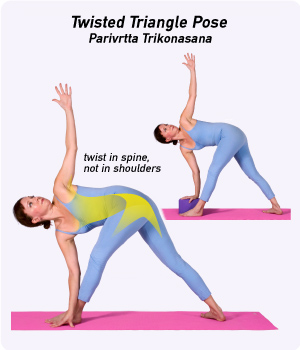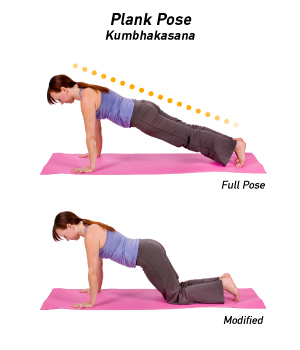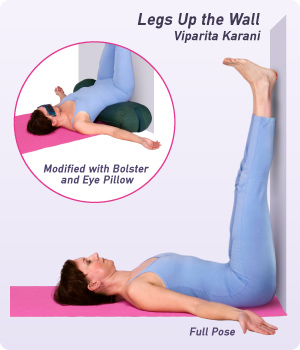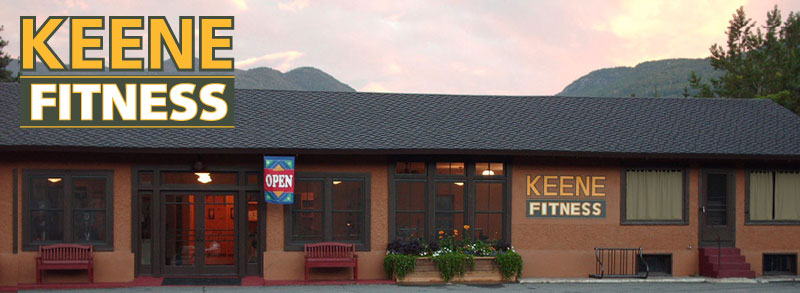Active in the Adirondacks
"Movement is Magical"
Contact
Your message has been sent
The Magic is in the Movement…Keep the Magic…Keep Moving!
Yoga Poses to promote a healthy transition into Spring.
Spring Poses to complement your sense of renewal and promote movement based detoxification.(Consult with your physician before beginning any exercise program, including the poses listed below)
Childs Pose

Cat-Cow

Kneeling Lunge (both sides)

Lunging Prayer Twist

Revolved Triangle Pose in Standing or Kneeling

Plank Pose Modified or Full

Modified Plank from Child’s Pose: Inhale, keeping knees bent, flow the shoulders to stack over your wrists and hips ahead of your knees.
Half Bow Pose

Seated Twist

Seated Forward Fold

Supported Shoulder Stand (legs up the wall)

Can be modified with props , as in the picture above . Start near a wall lying on your side. Bring your hips as close as possible to the wall. Then come onto your back. You may have to wiggle forward toward to wall if your buttocks are not touching the wall. Palms can be on your belly, or out to the side with your palms up. Hold for 5 to 10 minutes as you mindfully observe your breath and any sensations you feel in your body. This should feeling very relaxing. If it is uncomfortable, as with any pose, come out of the pose and try again.
Seated Easy Pose or Final Relaxation Pose (Savasana)

For final relaxation choose a comfortable position maintaining good alignment of the entire spine, as well as supporting joints comfortably (eg. roll under neck, bolster under knees, eye pillow, rolls under arms). Close your eyes, slow your breathing and take a few minutes to integrate the benefits of your practice from today.

Spring is in the air. A time of Transition!

Spring is a time of change. We may find ourselves feeling the warmth of the sun on our faces and saying ahhh! As evening approaches, and it is still light at 7:15pm, we feel a sense of lightness, renewal & energy. As our energy level increases we are ready for a change in our activity levels. Yoga is a great way to honor the longer daylight, renewal of our spirit and increased energy. Come join us for YogaFlow at Keene Fitness.
YogaFlow Classes are on Tuesdays at 9am and Thursdays at 1pm. Classes are about 90 minutes. The class type is gentle, slower paced, vinyasa yoga flow.

Keene Fitness is located on Route 73 in Keene Valley, directly across from the Noon Mark Diner.
From Exit 30 off the Northway (I-87) follow Route 73 northwest to Keene Valley. (about 10 miles from the Northway).
Retirement – What does it mean to you?
The joys of retirement can be elusive for some and easy to embrace for others. The thought of retirement can be scary. My feeling is that it really comes down to establishing new habits and patterns that include more time to enjoy activities that are difficult to do when you are working full time.
Let’s start a conversation. Share Ideas, thoughts, concerns & solutions regarding Retirement!
Yoga Quotes
“The most important pieces of equipment you need for doing yoga are your body and your mind” – Rodney Yee
Store ~ Purchase Gift Certificates ~ for Personal Training Session(s)
| Session Packages |
| 1 Hour Personal Training $50.00 USD 4 Pack of 1 hr Sessions $175.00 USD 10 pack of 1 hr sessions $450.00 USD |
![]()
Give the gift of Wellness & Fitness
$50 for 1 hour session
$175 for 4 sessions
$450 for 10 sessions
Body Mechanics & Yoga for the Sustainable Gardener
Keene Valley Library Gardening Series
Tips to maintain a sustainable gardener.
- Set a time limit to avoid overdoing.
- Set an area in your garden to focus on.
- Perform a simple warm-up to prepare your body for the gardening tasks you plan to do.
- Within the area of focus switch tasks every few minutes (ie. weeding, pruning, planting, raking, etc.)
- Take frequent active rest breaks to perform movements opposite of those you used gardening. Yoga is a great way to do this.
- Use proper body mechanics performing any task, the rules of proper body mechanics includes:
- Plant your feet side enough to create a stable base.
- Bend your knees, keeping your knees back behind your toes
- Maintain good spinal alignment by keeping a long spine, maintaining the natural curves, hinging at your hips, and keeping your head in line with your spine.
- Keep shoulder hugged in to the back rib cage, to reduce tension in the neck and shoulders.
- Shorten the Lever Length: Keep arms in close to body. If lifting something move up close to the object perform lifting it. Lift/lower object with bent arms. When weeding avoid over-reaching.
- Pivot turn vs. twisting.
- Use your core muscles when lifting (4 abdominal muscles and scapula muscles)
- Protect your skin to avoid skin damage that could eventually lead to skin cancer using protective clothing/gear, such as, sunscreen, sunglasses, hats, sun protection clothing, and gloves to protect your hands.
Poses to Warm-up the body:
- Mountain – Stand in mountain pose, grounding all 4 corners of our feet. Palms forward at your side, Core engaged. Breathing in through nose and out through nose (if you can). Inhale into the belly, chest and throat. Exhale as you tighten your abdominals. Feel your connection with the earth. (Center and focus on your intentions for yourself and garden)
- SunFlowers – inhaling sweeping arms out and up, exhaling taking our tailbone back, hinging at our hips, drawing hips in line with knees. Sweep arms towards floor. Purpose to build heat in entire body.
- Swan Dive to Fwd Fold to Reverse Swan Dive (Continuing to build heat- release tension in hamstrings, spine and neck)Bend knees, hinging at hips reach towards floor or shins with hands, then lengthen legs into forward fold, lifting tail bone toward sky. Reversing the swan dive, reach arms out to side, bend knees, lift from your navel arm and gaze, slowing return to mountain from the power of your legs and core.
Chair Flow to Extended Mountain (Warming up the legs): inhale sweep arms up into extended mountain. Exhaling, sit into a chair: pressing our tail bone back, lifting our arms to shoulder height or keeping them on our thighs. Repeat Inhaling into extended mountain, exhale into chair.
“The level of your gratitude promotes the level of your attitude”
Give your self a promotion this week by:
1. smiling more from the inside out, or outside in, until the smile becomes yours
2. performing more acts of kindness
3. Saying thank you more
4.Remembering Rule # 6: Don’t take yourself so seriously” – unknown (there are no other rules)
5. Love more
6. Dream more
7. Give more
….and you will become more!
Safe Snow Shoveling Tips!

Safety Tips for snow shoveling:
Start with 1. preparing your body for the activity, 2. using good body mechanics when actually shoveling, and 3. stretching after the activity. Staying hydrated and properly dressed is also necessary for safety. Keeping redundancy of effort to a minimum will also save you time and energy. This means avoiding shoveling the same snow twice by planning where to deposit the snow in advance, not throwing snow long distances, and by shoveling in a pattern that allows for depositing the snow below shoulder height. (1)
- Preparing your body for the activity of shoveling can start with some gentle yoga based flowing movements that warm up your body including: Standing Cat-Cow(Dog), Head & neck movements, Shoulder Shrugs, and gentle arm movements. This followed by a chair flow series that includes 1. Mountain Pose with gentle spine extension followed by 2. Chair pose. Steps 1 and 2 are repeated 5 to 10 times. Hydrate with water before going out to shovel.
- Good Body Mechanics involve proper lifting techniques which includes using your body with good spinal and limb alignment, bending your knees, engaging your core, alternating sides used to shovel, lifting smaller snow loads, taking mini stretch breaks, avoid twisting and using an ergonomic shovel if possible (for more information on shovel types see the Consumer Reports reference below. They have a nice list of shovel types and their benefits. They even recommend more than one shovel type for different snow removal activities. (2))
- Stretching and De-stressing your body after shoveling can include yoga based stretches and movements to counter balance the muscles and movements used for shoveling, such as standing cat-cow(dog), gentle back bends, hamstring stretches, lateral side bends, lunges with front leg on ground or step, gentle spinal rotation poses standing, seated or supine. Make sure you replace fluids with water after shoveling.
References from Web:
2.http://www.consumerreports.org/cro/news/2014/01/best-snow-shovels-safe-snow-removal/index.htm







Recent Comments